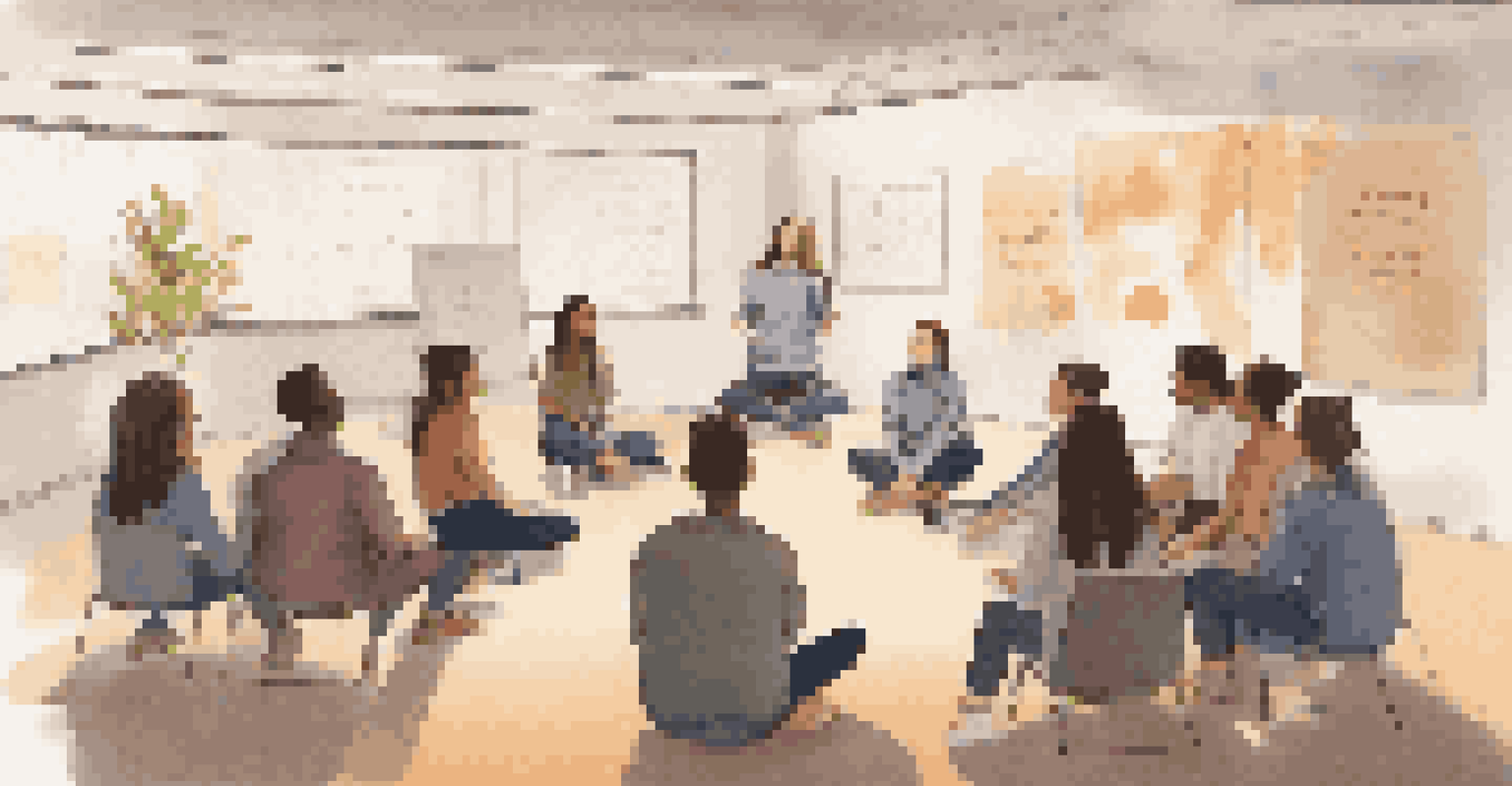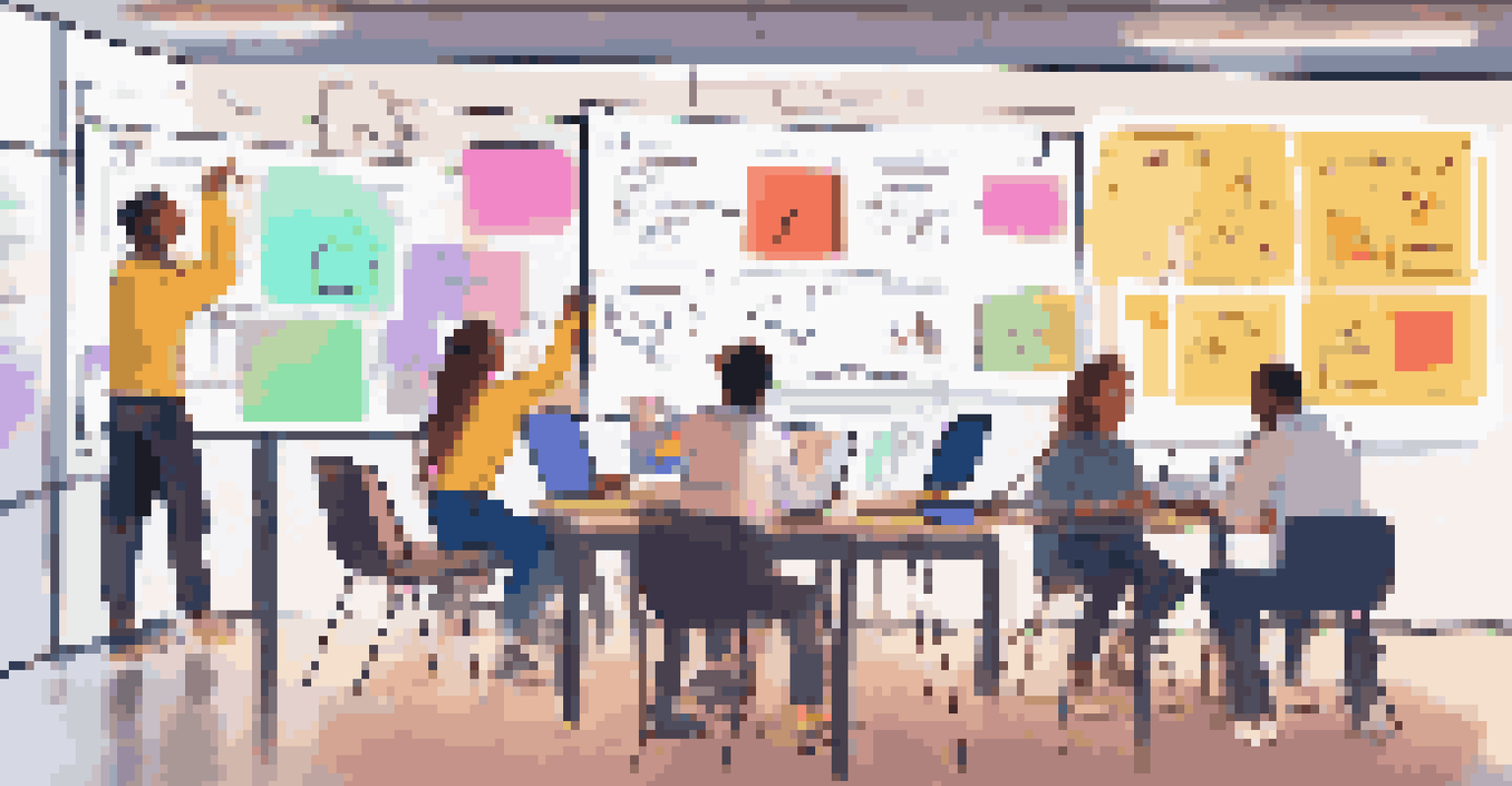Creating a Culture of Feedback in Blended Learning Environments

Understanding Blended Learning and Its Feedback Needs
Blended learning combines traditional face-to-face teaching with online learning experiences. This approach offers flexibility and accessibility, but it also introduces unique challenges, especially concerning feedback. In a blended environment, students may feel isolated during online activities and may not receive immediate feedback like they would in a classroom setting.
Feedback is the breakfast of champions.
Establishing a culture of feedback in this landscape is essential for student growth and engagement. Feedback in blended learning isn't just about grades; it’s about fostering a dialogue that encourages improvement and understanding. This dialogue can bridge the gap between online and in-person interactions, making learning a more cohesive experience.
By recognizing the specific needs of blended learning, educators can create supportive feedback mechanisms. This understanding lays the groundwork for developing a feedback-rich culture that enhances both student performance and satisfaction.
The Role of Technology in Facilitating Feedback
Technology plays a pivotal role in blended learning, especially when it comes to providing feedback. Learning management systems (LMS) like Canvas or Moodle allow instructors to give timely feedback through comments, grades, and analytics. These platforms can track student progress, enabling personalized feedback that meets individual needs and learning styles.

Moreover, tools like video feedback and peer review platforms can enhance the feedback process. For instance, a simple video comment can convey more emotion and clarity than written text alone. This can make feedback feel more personal and connected, which is crucial in an online setting where students might feel distant.
Integrating technology effectively not only streamlines the feedback process but also engages students in their learning journey. By using various tech tools, educators can create an interactive environment where feedback becomes a regular, welcomed part of the learning experience.
Creating a Safe Space for Open Feedback
A culture of feedback thrives in an environment where students feel safe to express their thoughts and concerns. Building this safe space involves establishing trust and encouraging open communication. Teachers can foster this by promoting a non-judgmental atmosphere where all feedback—both giving and receiving—is viewed as an opportunity for growth.
What is the shortest word in the English language that contains the letters: abcdef? Answer: feedback. That’s the breakfast of champions.
One effective strategy is to model vulnerability by sharing personal experiences of receiving feedback, including both positive and constructive comments. This can help students see feedback as a natural part of learning rather than something to fear. When students observe their teachers embracing feedback, they’re more likely to do the same.
Moreover, incorporating regular check-ins, either through surveys or one-on-one meetings, can help gauge student comfort levels regarding feedback. This proactive approach signals to students that their opinions matter and encourages them to engage more openly.
Encouraging Peer Feedback Among Students
Peer feedback is a valuable component of a feedback culture, especially in blended learning environments. Encouraging students to provide feedback to one another not only fosters collaboration but also deepens their understanding of the material. When students articulate their thoughts on a peer's work, they reinforce their own learning.
To facilitate effective peer feedback, educators can implement structured guidelines or rubrics that outline what constructive feedback looks like. This helps students focus on specific aspects of their peers' work, making the feedback more meaningful. Additionally, providing training on how to give and receive feedback can empower students to engage positively in this process.
Creating opportunities for peer feedback, such as group discussions or collaborative projects, can further enhance this practice. As students share insights and perspectives, they build a sense of community, which is particularly important in a blended learning setup.
Implementing Regular Feedback Loops
Regular feedback loops are essential for maintaining an ongoing dialogue about student progress. These loops can take various forms, such as weekly reflections, monthly assessments, or informal check-ins. Consistently revisiting feedback helps students recognize patterns in their performance and identify areas for improvement.
In a blended environment, these loops can be facilitated through both online and offline methods. For example, a weekly online survey can gauge student understanding of recent topics, while in-person discussions can address any lingering questions. This combination helps create a rhythm of feedback that keeps students engaged and informed.
Additionally, implementing feedback loops encourages accountability among students. When they know they’ll regularly receive feedback, they’re more likely to stay motivated and proactive in their learning, ultimately leading to better outcomes.
Using Feedback for Continuous Improvement
Feedback should never be a one-off event; it's a vital part of a continuous improvement cycle. Students and educators alike can use feedback to refine their approaches and enhance the learning experience. For instance, if a specific teaching method isn't resonating with students, feedback can highlight this, prompting necessary adjustments.
Encouraging a mindset of growth can help both students and teachers view feedback as a tool for enhancement rather than criticism. Celebrating small wins and progress made through feedback can further motivate everyone involved. This positive reinforcement creates an encouraging environment where continuous improvement is the norm.
Moreover, fostering a culture that values ongoing development can lead to innovative teaching practices and learning strategies. As both students and educators embrace feedback, they contribute to a dynamic learning environment that’s always evolving.
Celebrating Feedback Success Stories
Recognizing and celebrating instances of successful feedback can reinforce its importance within the learning community. Sharing stories where feedback led to significant improvements can motivate others to engage more actively in the process. Whether it’s through a newsletter, a classroom board, or an online forum, highlighting these successes can create a ripple effect.
Incorporating student voices in these celebrations can also be powerful. When students share their own experiences of how feedback influenced their learning journey, it humanizes the process and makes it relatable to others. This peer endorsement can encourage hesitant students to embrace feedback as a valuable resource.

Additionally, celebrating feedback success fosters a positive atmosphere that values growth and collaboration. By highlighting these stories, educators can further strengthen the culture of feedback, ensuring it remains an integral part of the blended learning experience.